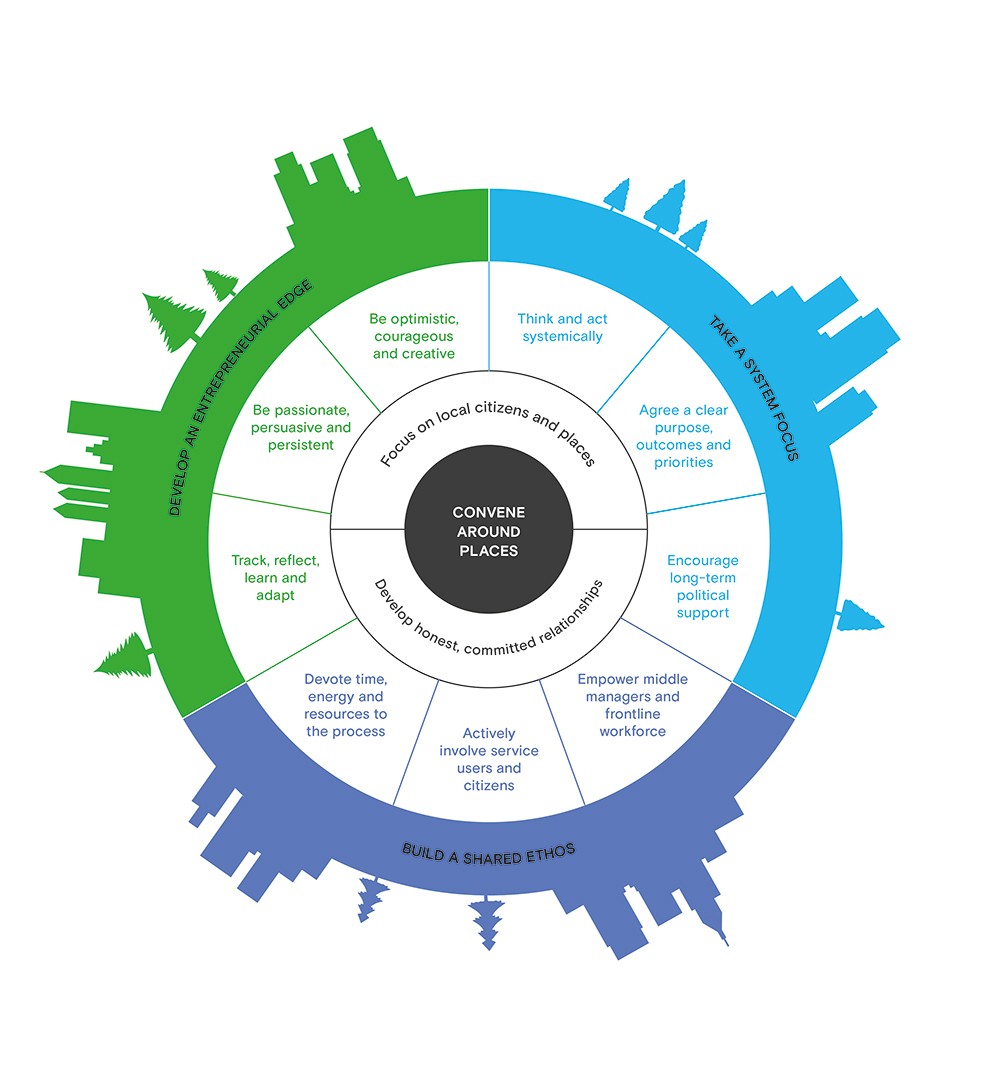Today is the launch of Happy City’s Index of Thriving Places. Liz Zeidler, founding director and chief executive, explains how Happy City’s Index can bridge the gap between good intentions and delivery – here and now.
The mantra of economic growth at all costs is now being challenged in organisations and media of all political persuasions. But while many recognise that different models of prosperity are needed, few are offering a credible way of measuring the conditions that allow wellbeing to flourish at a local level.
The world’s economy has doubled in 25 years, emissions are up 40%, and 60% of our ecosystem has degraded. Inequality is at epic levels – the six richest people own more wealth than the bottom half of the global population, the top 1% have more money than the bottom 99%.
Equitable, sustainable wellbeing is emerging as a frontrunner in the search for a better way of defining success and prosperity. In the last decade we’ve made real progress in our understanding of the drivers of wellbeing, and how we measure them.
WE KNOW WHAT COUNTS AND HOW TO COUNT IT
While many are seeking alternative models at a national or global scale, less effort has gone into enabling a practical shift at a local and regional scale. This is despite global trends in urbanisation and localism that put city and local leaders at the coalface of innovation.
Happy City’s Index of Thriving Places was designed to fill this gap –providing a progress report for local areas to help decision-makers shift the focus, place by place, towards measuring what matters.
The Index shines a light on how well places give people the conditions to thrive. Truly thriving places provide a range of conditions – mental and physical health, work and the local economy, education and learning opportunities, quality of place and environment and links between people and community.
Yet these elements, taken alone, can mask deep inequalities in the distribution of those conditions, or unsustainable means of providing them that could jeopardise future generations. Crucially and uniquely, the Index balances these conditions with equality and environmental impacts.
As economist Kate Raworth says, we need to “move from an economy that grows whether or not we thrive, to one where we thrive whether or not it grows.”
Happy City’s Index and the annual Thriving Places report call us to account on how well we are making progress in that aim within the limitations of our planet.
A SHARED COMPASS
By assessing conditions for thriving communities, people from different sectors can work together to tackle challenges. The Index provides a way of agreeing, measuring and tracking progress towards shared goals.
The framework uses a set of 49 indicators using existing, available and free to access data on the drivers of wellbeing – factors known to improve wellbeing. They are arranged into three headline domains:
- local conditions
- equality
- sustainability.

This provides a narrative of whether an area is creating conditions for people to thrive within environmental limits or in a socially just way. Within each domain there are sub-domains – and a focus on what can be influenced at local scale.
In 2016 Happy City (in partnership with New Economics Foundation) released the results for the nine largest cities in England (results can be seen here).
In 2017 they gathered and analysed the data for all 150 local authorities in England, and will release the results and Thriving Places Report at the Local Government Association head offices in Westminster in February.
You can also read our Understanding Local Needs for Wellbeing data report created by the Centre with Happy City.
To learn more, please visit: What Works Centre for Wellbeing





